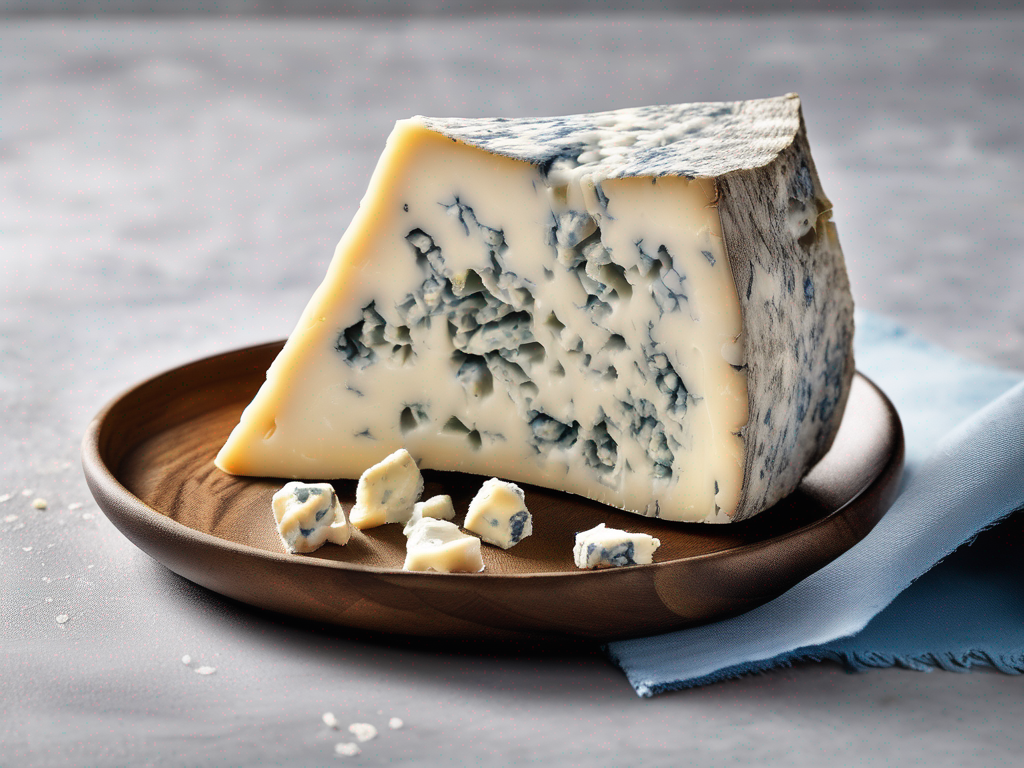
The Ultimate Guide to Storing Blue Cheese Wedge to Prevent Mold Growth
Get Your Free Food Safety Cheat Sheet
30 most common foods with instant answers. Print it and stick it on your fridge—completely free!
The Ultimate Guide to Storing Blue Cheese Wedge to Prevent Mold Growth
Blue cheese, with its distinctive flavor and creamy texture, is a beloved addition to salads, cheese boards, and various dishes. However, improper storage can lead to mold growth and spoilage, diminishing the quality and safety of this delicious cheese. In this comprehensive guide, we will explore the best practices for storing blue cheese wedges to maintain freshness and prevent mold growth. (Blue cheese wedge)
Understanding Blue Cheese
Blue cheese is a type of cheese that is characterized by the distinctive blue veins or spots of mold running through it. This mold, typically Penicillium roqueforti or Penicillium glaucum, is intentionally introduced during the cheese-making process to create its unique flavor profile. While mold is an integral part of blue cheese, unwanted mold growth on the surface of the cheese can occur if it is not stored properly.
Why Proper Storage Matters
Proper storage of blue cheese is crucial for maintaining its quality, flavor, and safety. Mold growth on cheese can lead to spoilage, off-flavors, and potential health risks. By following the correct storage guidelines, you can prolong the shelf life of your blue cheese and enjoy it at its best.
Factors that Contribute to Mold Growth
Several factors can contribute to mold growth on blue cheese, including:
- Temperature fluctuations
- Exposure to moisture
- Inadequate airflow
- Contamination from other foods
Understanding these factors can help you make informed decisions when storing your blue cheese wedge.
Best Practices for Storing Blue Cheese Wedge
To prevent mold growth and ensure the longevity of your blue cheese wedge, follow these practical tips:
1. Optimal Storage Temperature
Maintaining the right temperature is crucial for preserving the quality of blue cheese. Store your blue cheese wedge in the refrigerator at a consistent temperature between 35-45°F (1-7°C). Avoid storing it in the door of the refrigerator, as temperatures can fluctuate significantly in this area.
2. Proper Packaging
Proper packaging plays a key role in preventing mold growth on blue cheese. Follow these guidelines:
- Wrap the cheese in wax paper or parchment paper to allow it to breathe.
- Avoid wrapping blue cheese in plastic wrap, as it can trap moisture and promote mold growth.
- Place the wrapped cheese in a resealable plastic bag or airtight container to maintain freshness.
3. Store Away from Strong Odors
Blue cheese has a strong aroma that can easily absorb other odors in the refrigerator. To prevent your cheese from picking up unwanted flavors, store it in a separate container or drawer away from pungent foods like onions, garlic, and seafood.
4. Check for Moisture
Excess moisture can encourage mold growth on blue cheese. Periodically check the cheese for any signs of moisture or condensation. If you notice any dampness, gently pat the cheese dry with a paper towel before rewrapping it.
5. Regular Inspection
Inspect your blue cheese wedge regularly for any signs of mold growth or spoilage. If you notice any mold on the surface, cut off the affected area along with a generous margin to prevent cross-contamination. The rest of the cheese should be safe to consume.
6. Use It or Freeze It
If you find that you won't be able to consume your blue cheese wedge before it reaches its expiration date, consider freezing it. While freezing can alter the texture of the cheese, it is a viable option for preserving it for longer periods. Wrap the cheese tightly in plastic wrap and place it in a freezer-safe container before freezing.
Conclusion
By following these storage guidelines, you can enjoy your blue cheese wedge at its best while minimizing the risk of mold growth and spoilage. Proper storage practices not only preserve the quality and flavor of the cheese but also ensure its safety for consumption. Remember to regularly inspect your blue cheese wedge, maintain the right temperature, and package it correctly to extend its shelf life and savor its delicious taste.
Now that you have mastered the art of storing blue cheese, [learn more about blue cheese wedge](/food/blue cheese wedge) and experiment with different recipes to elevate your culinary creations. Cheers to savoring the rich flavors of blue cheese with confidence and enjoyment! (Blue cheese wedge)
Related Posts
Here are some other articles you might find helpful:
Authoritative Food Safety References
These agencies and university labs inform every tip and health precaution we publish.
USDA FoodKeeper – Cold Storage Guidelines
Official refrigerator, freezer, and pantry timelines maintained by the U.S. Department of Agriculture.
Visit USDA FoodKeeperFDA Produce Safety Rule & Grower Guidance
Field-to-fridge handling practices that prevent contamination of fruits, vegetables, and leafy greens.
Visit FDA Produce SafetyCDC Foodborne Illness Prevention Hub
Surveillance-backed guidance on pathogens, symptoms, and steps to reduce foodborne illness risk.
Visit CDC Food SafetyUC Davis Postharvest Technology Center
University research detailing optimal storage atmospheres for produce after harvest.
Visit UC Davis PostharvestPenn State Extension – Home Food Preservation & Safety
Peer-reviewed extension bulletins on safe canning, chilling, and reheating practices.
Visit Penn State ExtensionGet Your Free Food Safety Cheat Sheet
30 most common foods with instant answers. Print it and stick it on your fridge—completely free! Want more? Upgrade to the complete guide with 70+ foods.
Scan your food directly and get instant safety info using our AI-powered camera feature.